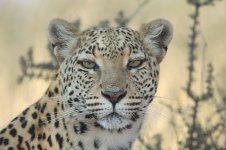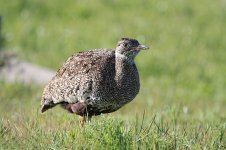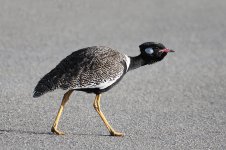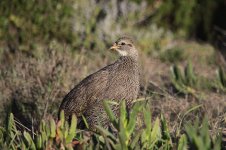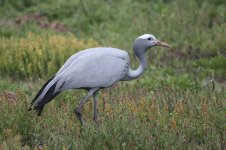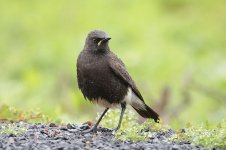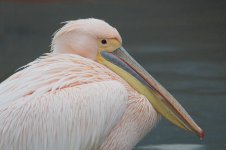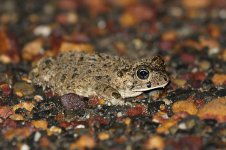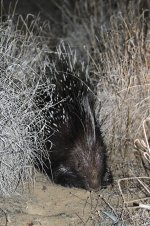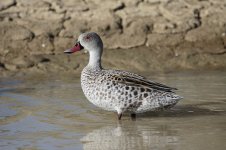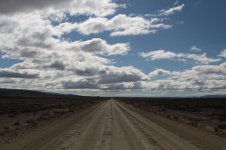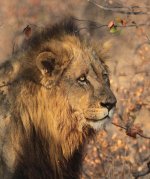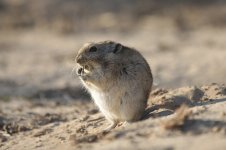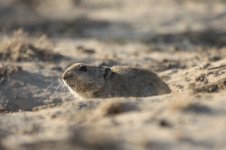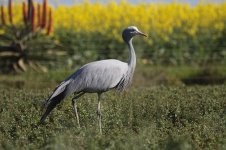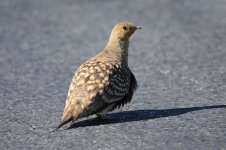
South Africa, vast, amazing. Arid deserts, lush sub-tropical forests, lowland fynbos, spectacular snow-capped peaks of the Drakensburg, all combine to produce a mouth-watering diversity of both birds and mammals, the country boasting at least 850 species of bird and 300 of mammal.
Being in the fortunate position of having already spent over two years in southern Africa and having seen virtually all the bird species on the sub-continent, this latest escapade of three weeks could allow me focus not only on the regions I enjoy the most, namely the arid semi-deserts of the Karoo and Kalahari, but also turn my attention to mammals in a more dedicated manner, the idea to seek out felines and some of the more elusive night mammals, all of which achieved most successfully. With few exceptions, I did not seek out bird specialities where they required stake outs or specific destinations, but rather chose a route to maximise possibilities to encounter mammals.
In a country that is little short of a sub-continent in itself, the route I planned ultimately clocked up over 8000 km, a fairy hefty total. In order to avoid loosing valuable daylight hours, the two biggest segments of the trip (700 km Cape Town to Pofadder and 1300 km Kgalagadi to Kruger) were done at night.
More or less, this trip could be broken down into three parts:
1. The Western Cape.
A week-long trip, starting in the West Coast National Park before crossing the Cederburg Mountains to reach the Tanqua Karoo and thereafter to the Agulhas Plain and De Hoop. Rounding off this part of the trip, a couple of days in the Cape Town area, then a spectacular pelagic trip into the stormy waters south of the Cape of Good Hope.
Abundant birds including both Cape and Spotted Eagle Owls, Karoo Korhaans and Denham's Bustards, Cape Sugarbirds and, my first new bird of the trip, Damara Canary. Pelagic highlights included two Northern Royal Albatrosses and an abundance of Antarctic Prions.
Mammals included Cape Porcupine, Cape Clawless Otter and early-returning Southern Right Whales, plus Bonteboks, Grey Rhebok and a variety of other antelopes.
2. Kgalagadi Transfrontier Park.
Five days in the fantastic Auob and Nossob Valleys of the Kgalagadi, plus a day exploring the nearby Poffadder region and Augrabies Falls.
Without doubt the highlight of the trip, Kgalagadi was simply one delight after another - no less than seven Cheetahs, two Leopards, four Lions, six African Wild Cats and one Brown Hyena. Also, plenty of other mammals, plus an amazing adundance of raptors, Kori Bustards ten a penny and hornbills and passerines tripping over to perform for the camera.
3. Kruger National Park/Swaziland.
Hardly requiring an introduction, Kruger supports one of the greatest diversities of mammals anywhere in Africa and the birding in second to none. Starting in the north, I first visited the relatively remote Punda Maria and Pafuri, before traversing the park staying at Shingwedzi and Satara en route south. Hitting the Lower Sabie region, the volume of other tourists becomes a little overwhelming, so I then abandoned the park and travelled into Swaziland for a couple of days and later a quick stop in Wakkerstroom.
Numerous highlights, including African Civet and Large-spotted Genet at night, four White Rhinocerous at assorted waterholes and, back to the feline beasties, two more Cheetahs and three Lions. Also White-backed Night Heron, Green-backed Heron, Southern Ground Hornbills and, most welcome, both Mottled and Bohm's Spinetails.
One of the cats for starters....
Being in the fortunate position of having already spent over two years in southern Africa and having seen virtually all the bird species on the sub-continent, this latest escapade of three weeks could allow me focus not only on the regions I enjoy the most, namely the arid semi-deserts of the Karoo and Kalahari, but also turn my attention to mammals in a more dedicated manner, the idea to seek out felines and some of the more elusive night mammals, all of which achieved most successfully. With few exceptions, I did not seek out bird specialities where they required stake outs or specific destinations, but rather chose a route to maximise possibilities to encounter mammals.
In a country that is little short of a sub-continent in itself, the route I planned ultimately clocked up over 8000 km, a fairy hefty total. In order to avoid loosing valuable daylight hours, the two biggest segments of the trip (700 km Cape Town to Pofadder and 1300 km Kgalagadi to Kruger) were done at night.
More or less, this trip could be broken down into three parts:
1. The Western Cape.
A week-long trip, starting in the West Coast National Park before crossing the Cederburg Mountains to reach the Tanqua Karoo and thereafter to the Agulhas Plain and De Hoop. Rounding off this part of the trip, a couple of days in the Cape Town area, then a spectacular pelagic trip into the stormy waters south of the Cape of Good Hope.
Abundant birds including both Cape and Spotted Eagle Owls, Karoo Korhaans and Denham's Bustards, Cape Sugarbirds and, my first new bird of the trip, Damara Canary. Pelagic highlights included two Northern Royal Albatrosses and an abundance of Antarctic Prions.
Mammals included Cape Porcupine, Cape Clawless Otter and early-returning Southern Right Whales, plus Bonteboks, Grey Rhebok and a variety of other antelopes.
2. Kgalagadi Transfrontier Park.
Five days in the fantastic Auob and Nossob Valleys of the Kgalagadi, plus a day exploring the nearby Poffadder region and Augrabies Falls.
Without doubt the highlight of the trip, Kgalagadi was simply one delight after another - no less than seven Cheetahs, two Leopards, four Lions, six African Wild Cats and one Brown Hyena. Also, plenty of other mammals, plus an amazing adundance of raptors, Kori Bustards ten a penny and hornbills and passerines tripping over to perform for the camera.
3. Kruger National Park/Swaziland.
Hardly requiring an introduction, Kruger supports one of the greatest diversities of mammals anywhere in Africa and the birding in second to none. Starting in the north, I first visited the relatively remote Punda Maria and Pafuri, before traversing the park staying at Shingwedzi and Satara en route south. Hitting the Lower Sabie region, the volume of other tourists becomes a little overwhelming, so I then abandoned the park and travelled into Swaziland for a couple of days and later a quick stop in Wakkerstroom.
Numerous highlights, including African Civet and Large-spotted Genet at night, four White Rhinocerous at assorted waterholes and, back to the feline beasties, two more Cheetahs and three Lions. Also White-backed Night Heron, Green-backed Heron, Southern Ground Hornbills and, most welcome, both Mottled and Bohm's Spinetails.
One of the cats for starters....
Attachments
Last edited:




